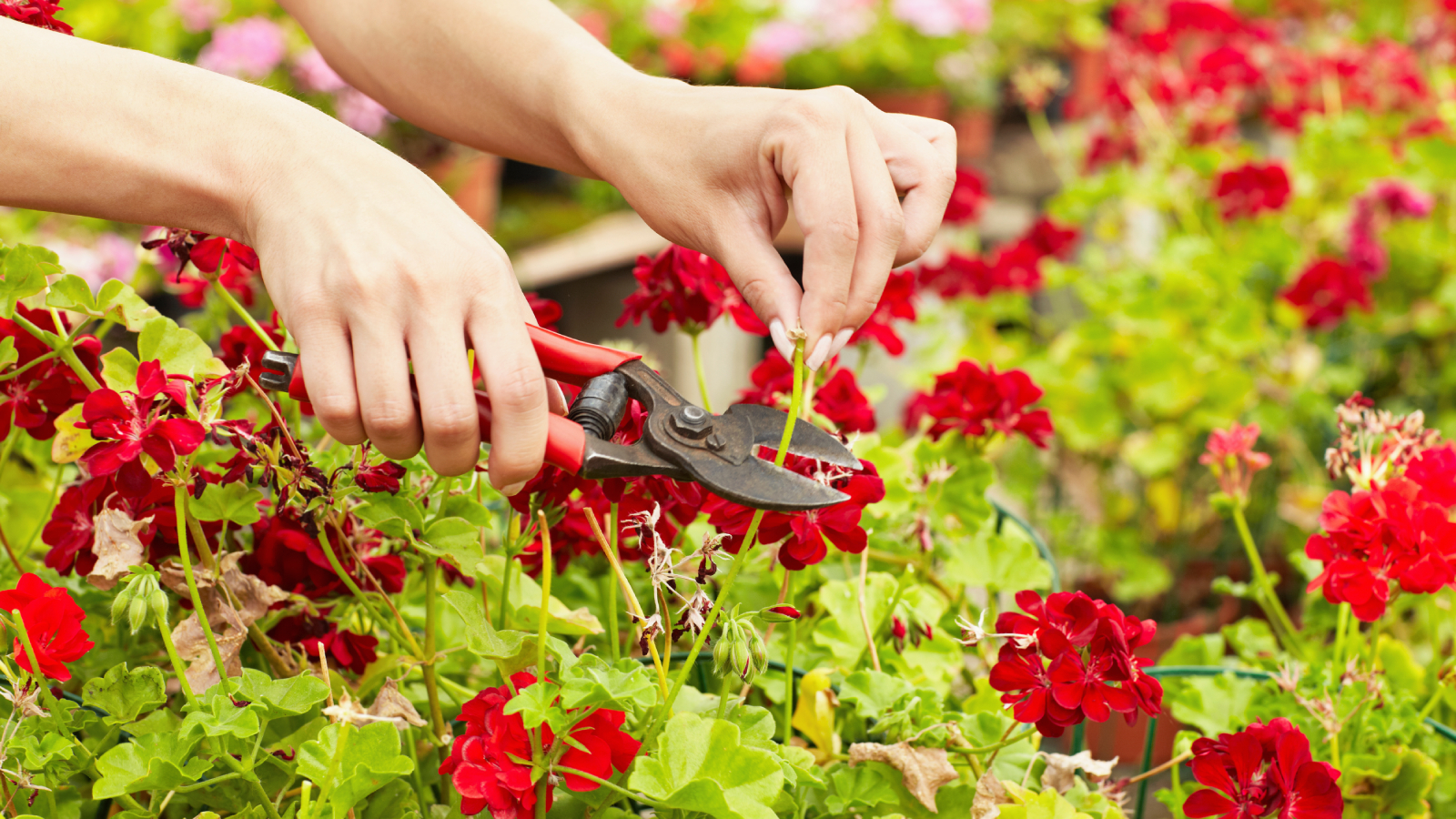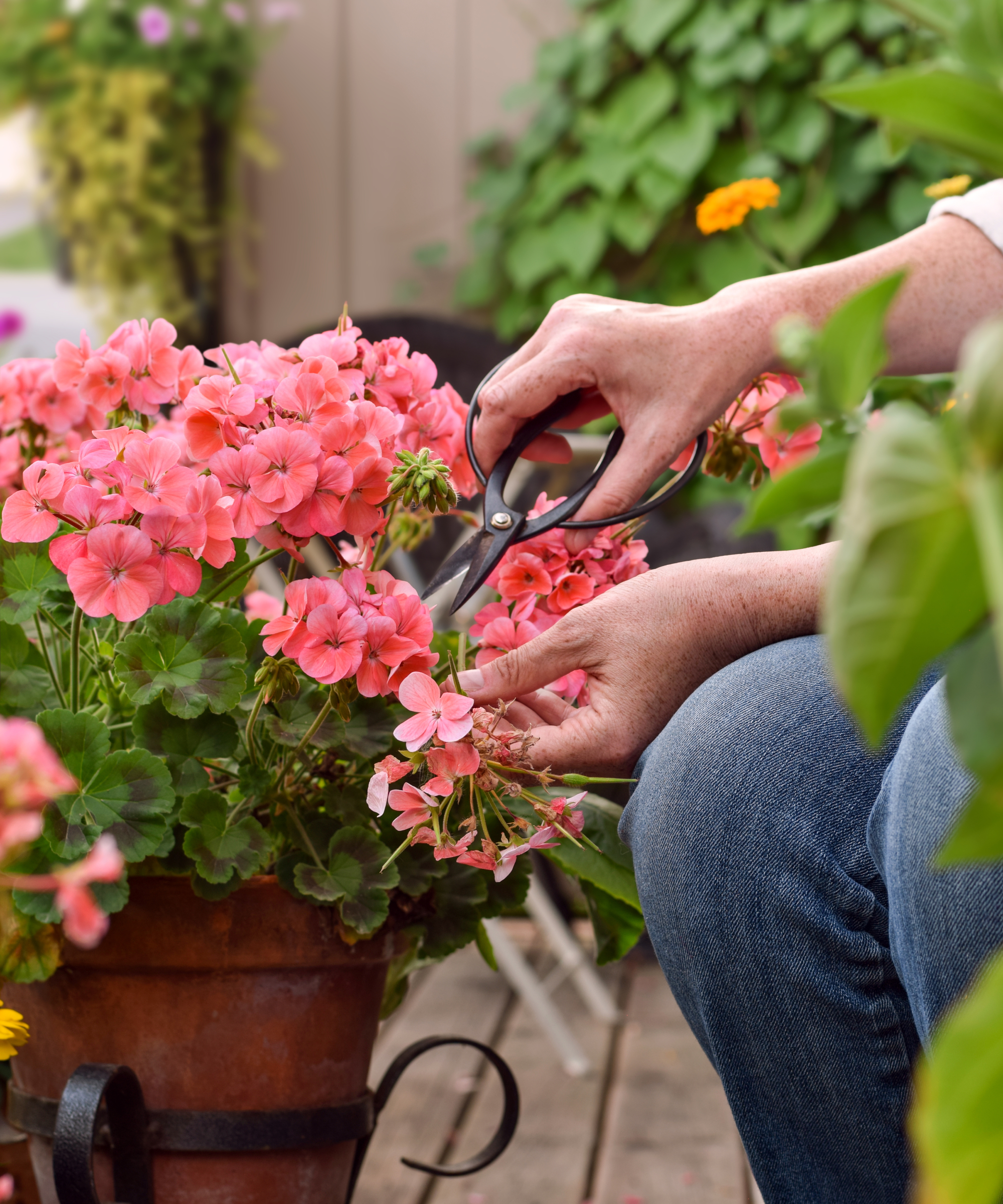How To Deadhead Geraniums For A Huge Flush Of Blooms That Will Last All Summer Long
Learn how to deadhead geraniums for blooms that will last all summer long. Just follow this easy expert advice for lush, lovely plants.


Tonya Barnett
If you want more flowers from these classic annual plants, you need to learn how to deadhead geraniums the right way. Geraniums are one of the most common annuals for summer. With their brilliant, colorful blooms, geraniums have long been a favorite of many gardeners.
There are many varieties of geraniums from which to choose. Some of the most common are zonal, ivy, and scented. But no matter what kind you grow, deadheading is key to good geranium care and is done for more than just appearances.
Deadheading prevents plants from wasting time and energy on a spent bloom and allows it to direct its efforts towards producing new buds and flowers. By removing dead flowers, you can keep geraniums blooming all summer. Plus, for those of us neatniks, deadheading is a satisfying way to return the plant back to tidy perfection. Let’s take a look at how and when to deadhead geraniums for healthy plants and the best show of blooms.
What Is Deadheading?
Deadheading is the practice of taking off spent flowers. You can deadhead many types of plants but in the case of geraniums, whose blooms are held on long stems, the process is less finicky than on tightly flowered plants.
With geraniums, the flower cluster at the top of the stem may be in various stages of freshness. Some new petals may be present while others are faded and old. You can opt to wait until all the petals are dead or take off the flower cluster when its appearance is mostly past its prime.
Some gardeners just use their fingers to pinch off the old blooms, which is handy if you are just passing through the garden. Others use scissors, pruners, or small pincers made specifically for deadheading, like these Fiskars pruning scissors from Amazon.

Do You Have to Deadhead Geraniums?
Geraniums don’t need to be deadheaded, but there are many benefits to doing so. Your plants will continue growing and producing more flowers even if you don’t prune them. But the ugly dead flowers will linger over the foliage and take away from the beauty of your summer blooming plants. When new flowers form, they will be partially hidden by the dead plant material.
Sign up for the Gardening Know How newsletter today and receive a free copy of our e-book "How to Grow Delicious Tomatoes".
Additionally, deadheading can speed up the production of more blooms and can even help prevent the spread of certain diseases that live in decaying material. So pruning geraniums is always a good idea and an easy summer gardening chore that doesn’t take much time or effort.
When to Deadhead Geraniums
There is no particular time of year when you should deadhead your geraniums. If you wish to keep a tidy appearance, check the flowers at least once a week and remove any faded blooms. This pruning schedule will encourage blooms throughout the entire summer season.

How To Deadhead Geraniums
So how do you deadhead geraniums? It’s very easy and doesn't require any special gardening tools. Unlike some plants, which are crowned with numerous flowers and must be sheared off when the blooms fade, geraniums provide you with easy to remove stalks.
Make sure your pruners, secateurs, scissors, or knife are clean and sharp to prevent injuring your plant or introducing any geranium diseases. Remove the entire flower stem down as close to the main stem of the plant as possible. If the bloom has been dead for some time, you can pull out the old stem with ease. You can also cut just above the foliage to avoid cutting the leaves, but this may leave an unattractive brown stump.
If you lack garden tools, just use your hand. Simply snap off the entire stem with the faded flower or sink your thumb and forefinger into the foliage and pinch it off. These thumb knives from Amazon make pinching off faded blooms even easier.
Frequently Asked Questions
What is the correct way to deadhead geraniums?
You can’t really go wrong when deadheading geraniums. As long as you don’t accidentally remove too much foliage or any new buds, you can remove the old flower stem quite far down into the plant. If you lack tools, you can also pop off the top of the flower manually, but this will diminish the plant's appearance due to the browning stems.
Can you deadhead geraniums with scissors?
Scissors, provided they are adequately sharp, are excellent ways to remove individual dead geranium blooms or entire stems.
Deadheading Must-Haves
- Consider a sharp pair of shears like the ever-popular Fiskars ⅝” Bypass Pruner from Amazon
- Protect your hands with a pair of puncture-resistant gardening gloves from Amazon
- Collect garden scraps and compostables in a lawn garden bag from Amazon

Bonnie Grant is a professional landscaper with a Certification in Urban Gardening. She has been gardening and writing for 15 years. A former professional chef, she has a passion for edible landscaping.
- Tonya BarnettWriter